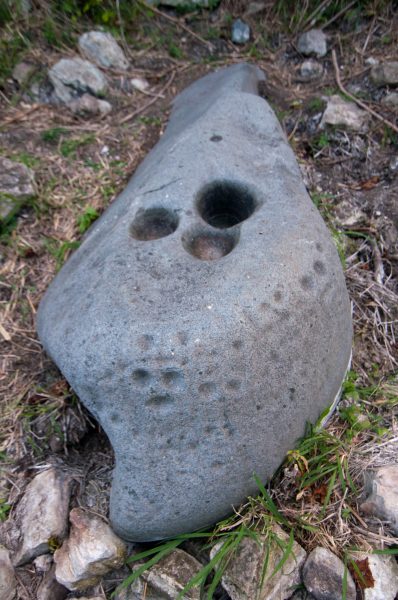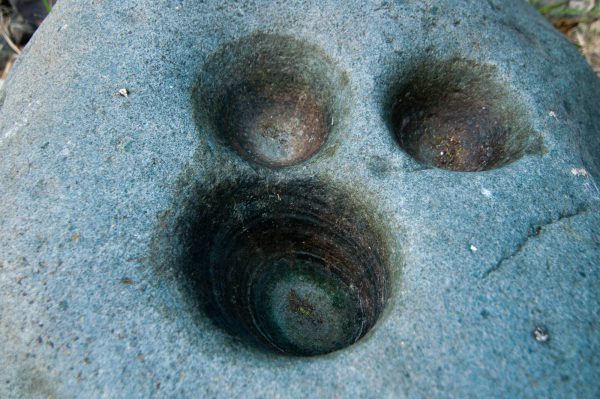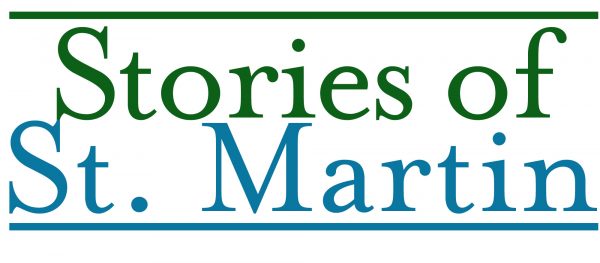Where the last houses give way to the slope of the central hills in French Quarter, there is a stone with many faces. It is called the Moho stone, and it was named after a nearby well. It is the most elaborate prehistoric stone carving on the island.
Stone carvings, also called as petroglyphs, are found all over the Caribbean. In some ways, they are more mysterious than other archaeological remains. Some artifacts can be dated by radiometric analysis. Radiocarbon dating can be done on wood and bone, for example. The Moho stone, on the other hand, existed long before it was carved, so there’s no way to directly measure the age of the carvings.

The largest features of the Moho stone are three deep holes on the top of the stone. These features are sometimes called cupules. They were made for the polishing of stone tools. They could hold sand or other grit as an abrasive for polishing stone tools.
Cupules could also hold water, which would keep the tools from overheating when they were being polished. In most cases, stones like this are found near water. Perhaps at one time a stream ran beside the Moho stone regularly. These cupules may have served other purposes as well. They may have been used as mortars for pounding or grinding roots or seeds.

The Moho stone clearly had practical uses, but was it art? Did it have cultural or spiritual meaning to the people who carved it? The answer is almost surely yes. The three large cupules are arranged in a pattern common to many stone carvings that represents the eyes and mouth of a human face. The stone also features many additional faces and designs.
For us, the Moho stone will always be incomplete. We can understand some of its purpose, but we will probably never know the inspiration behind the carvings and what it meant to the people who made it. To us, it will always be a mystery.
Still, in the middle of the most densely populated island in the Caribbean, it is a reminder that all the roads and buildings are a very recent development. All of St. Martin history is just a short time, and people were here for long ages before that. The Moho stone is a rock of ages, and you can still stand beside it and consider its epic past.
Do you know anything about the Moho stone or the well it was named after? Share it by writing in to The Daily Herald or info@lesfruitsdemer.com.

